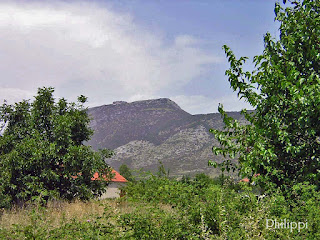When we read about Alexander the Great, we easily get the impression that he is the genius who decided to cross the Hellespont to conquer the rest of the world, winning every single battle and playing the politically correct move each time he encountered a new city on his path.
He had to settle a few matters "back home" first, but they seemed futile compared to what was achieved later in Asia. Such a statement is only partially true since we have little or no background information on the status of and in Macedonia when Alexander became King in 336 BC. Ancient writers have not been very helpful in that field as they generally start Alexander's history when he sets out to Asia. Plutarch is the only one to relate some details about his youth. So, it is unsurprising that our overall picture of Alexander needs to be revised.
He had to settle a few matters "back home" first, but they seemed futile compared to what was achieved later in Asia. Such a statement is only partially true since we have little or no background information on the status of and in Macedonia when Alexander became King in 336 BC. Ancient writers have not been very helpful in that field as they generally start Alexander's history when he sets out to Asia. Plutarch is the only one to relate some details about his youth. So, it is unsurprising that our overall picture of Alexander needs to be revised.
Pushing aside the heroics for the moment, we know that Alexander, at 16, was made Regent of Macedonia by his father, King Philip II, who was leading a dangerous campaign around Perinthus. The King's calculated assignment to appoint his son to such a responsible position cannot be underestimated! When Alexander was 18 years old, Philip felt confident enough to place him opposite the Theban Band at the Battle of Chaironeia, where the young prince and his cavalry killed the unbeatable Theban Band to the last man, eliminating a centuries-long entity for good. King Philip must have been very clever and realistic in judging his son's capabilities. Not many fathers would do that, and, as it turned out after the King's assassination, no friend or foe either. None of them believed Alexander would so handily continue in his father's footsteps. He led an attack at lightning speed against the northern tribes all the way to the Danube and south against Thebes, who secretly hoped to stand a good chance against the young King. These fights went down in our history books with only a few lines as Alexander's incredible tactical maneuvers are overshadowed by his later conquests in the East.
Yet we forget that up to this point, we owe most of Alexander's successes to his father, for Alexander's genius was not born overnight. Although we know that Philip led many a fight against his Macedonian neighbors, we generally ignore that this was a never-ending struggle. The stubbornness of the Balkan people certainly was no less than that of the Bactrians Alexander had to face in Central Asia years later. On top of that, Athens with Demosthenes in the front rows was always cross. As soon as Philip dared to sneeze, so to speak, Demosthenes had his critics ready, and Athens listened.
It generally is beyond our awareness that Philip was the one who restructured and united Macedonia – a far from easy task (the present political situation in Greece is nothing new). Philip cemented the loose city-states into one country, Greece, and with the League of Corinth, he ensured they would no longer fight each other. What an accomplishment! Philip understood like no other the art of diplomacy besides being an excellent tactician and general. He knew how to eliminate each enemy at the right time and manipulate his opponents, pending the ideal moment to act.
It is clear that the kingdom of Macedonia, as inherited by Alexander, had been conquered with bits and pieces by his father over a good twenty years. When Philip was elected King (he was only meant to be regent for the infant Amyntas, his brother's son), the country was on its knees, and only a miracle could save it. Well, Philip was that miracle, and he made it work. He spent little time at his palaces of Pella or Aegae and often had to fight simultaneously on different fronts, from Thessaly and Thebes to the Black Sea. He went through immense efforts to make peace with everybody, and in between all the bickering and the revolts, he managed to rule the country, lead the economy to heights unheard of, and negotiate with every single ambassador in an appropriate style! Not an ideal setting to pamper Alexander in a carefree youth. It is evident to see where this young King got his determination from! Yes, like father, like son! What an example he was for Alexander!
When Philip II of Macedonia was assassinated in 336 BC, he was at the top of his power ruling over an enlarged Macedonia and a unified Greece (all the Greek city-states except Sparta). Alexander could almost immediately leave for Asia, were it not that because of his youth, he first had to prove himself a worthy successor to his father – on the one hand towards the neighboring tribes and on the other hand towards Greece as heir to his father's title of hegemon of the League of Corinth.


























